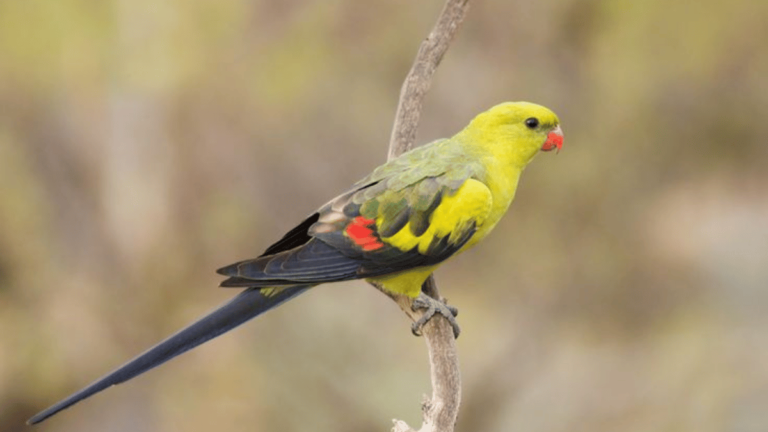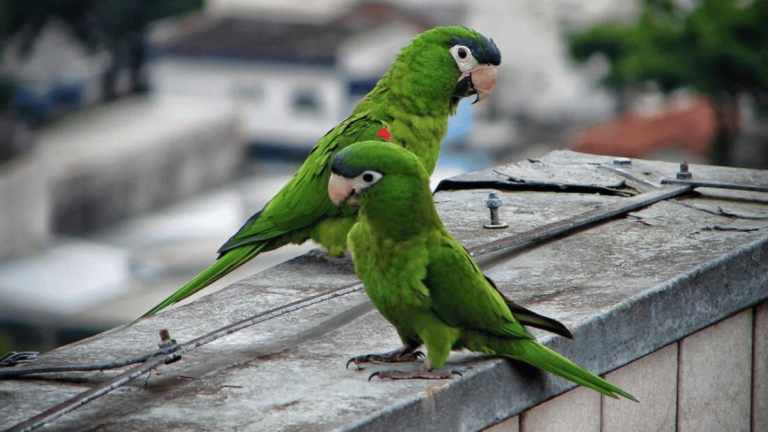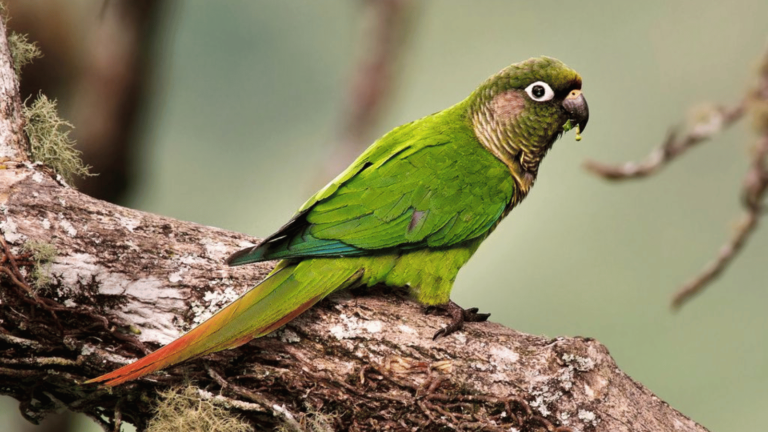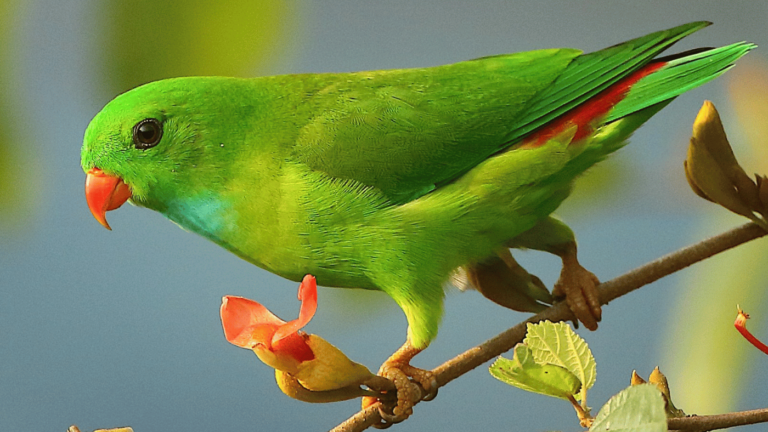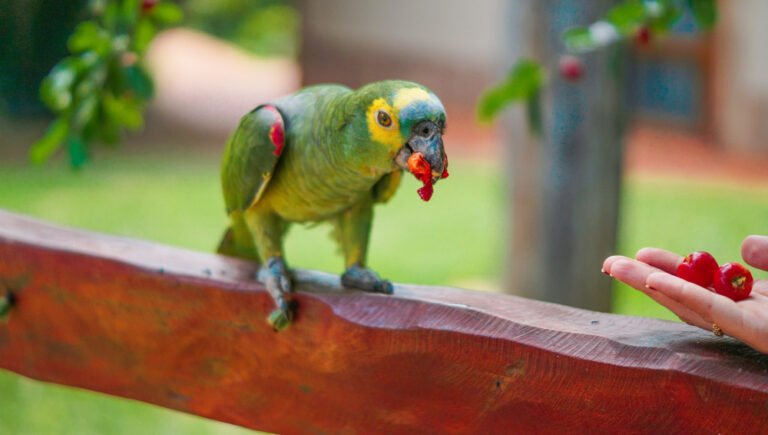Welcome to our comprehensive guide on the Greater Vasa Parrot! If you’re curious about this fascinating bird species, you’ve come to the right place. In this section, we will delve into their habitat, characteristics, and behavior, giving you a deeper understanding of these unique creatures.
Key Takeaways:
- The Greater Vasa Parrot is native to Madagascar and the Comoros.
- These parrots have distinct physical characteristics, including a long neck and legs.
- They are known for their friendly and affectionate nature.
- The Greater Vasa Parrot displays intelligent and playful behavior.
- Conservation efforts are crucial to protecting their habitat and ensuring their survival.
Taxonomy and Description of the Greater Vasa Parrot
The Greater Vasa Parrot, scientifically known as Coracopsis vasa, is a fascinating bird species that belongs to the genus Coracopsis. It has three subspecies, namely Coracopsis vasa, Coracopsis vasa comorensis, and Coracopsis vasa drouhardi. This parrot is larger than the male and has a grayish-black beak. During the breeding season, which is believed to be between October and December, the female Greater Vasa Parrot undergoes a remarkable transformation.
Females are physically dominant and have multiple sexual partners. They shed their head feathers and develop bright orange skin coloration. The males, on the other hand, experience similar color changes, albeit less noticeable. They have re-evolved a phallus, and copulations can last up to 90 minutes. The unique physical characteristics and behaviors of the Greater Vasa Parrot make it an intriguing species to study and observe.
| Species | Scientific Name | Subspecies | Breeding Season | Physical Characteristics |
|---|---|---|---|---|
| Greater Vasa Parrot | Coracopsis vasa | Coracopsis vasa | October to December | Larger size, grayish-black beak, color transformation during breeding season |
| Greater Vasa Parrot (Comoros) | Coracopsis vasa comorensis | Coracopsis vasa comorensis | October to December | Larger size, grayish-black beak, color transformation during breeding season |
| Drouhard’s Vasa Parrot | Coracopsis vasa drouhardi | Coracopsis vasa drouhardi | October to December | Larger size, grayish-black beak, color transformation during breeding season |
The Greater Vasa Parrot is a fascinating species with unique physical characteristics and behaviors. During the breeding season, females undergo a remarkable transformation, shedding their head feathers and developing bright orange skin coloration. The males also experience color changes and have re-evolved a phallus. These distinct traits make the Greater Vasa Parrot an intriguing subject for further study.
Understanding the taxonomy and physical description of the Greater Vasa Parrot provides valuable insights into the species’ evolutionary adaptations and reproductive strategies. The distinct subspecies and their specific physical characteristics further contribute to the diversity within the Coracopsis genus. Studying these remarkable birds can shed light on the intricate mechanisms of sexual selection and reproductive success in avian species.
| Characteristic | Male | Female |
|---|---|---|
| Size | Smaller | Larger |
| Beak Color | Grayish-black | Grayish-black |
| Bald Head | No | Yes |
| Color Transformation | Yes (less noticeable) | Yes |
| Copulation Duration | Up to 90 minutes | Up to 90 minutes |
Habitat and Ecology of the Greater Vasa Parrot
The Greater Vasa Parrot is primarily found in the dry deciduous forests of Madagascar. These forests provide the ideal habitat for the parrots, offering a diverse range of flora and fauna that the birds rely on for sustenance and shelter. As the name suggests, dry deciduous forests are characterized by trees that shed their leaves during the dry season, providing a unique environment for the parrots to thrive.
The feeding habits of the Greater Vasa Parrot are diverse and adaptable. They primarily feed on a variety of wild berries, fruits, nuts, and seeds found in their natural habitat. However, they are also known to consume cultivated crops such as maize, millet, and rice, making them resourceful foragers.
One of the unique behaviors of the Greater Vasa Parrot is their activity during moonlit nights. They are most active during these nights, and often roost in large, noisy flocks in the tops of tall trees. Additionally, female Greater Vasa Parrots have been observed singing complex songs from perches close to their nests. These songs serve to attract males for food regurgitation and also to defend their territory from other females.
| Feeding Habits | Behavior |
|---|---|
| Wild berries | Active on moonlit nights |
| Fruits | Singing complex songs |
| Nuts | Food regurgitation |
| Seeds | Territorial defense |
In captivity, Greater Vasa Parrots have also exhibited unique behaviors. For example, at Lincolnshire Wildlife Park, some individuals have been observed using grinding technology. They hold stones and pebbles in their beak to grind calcium-rich dust from seashells, highlighting their intelligence and adaptability in their interactions with their environment.
The habitat and ecology of the Greater Vasa Parrot is intricately linked to their survival and well-being. It is crucial to understand the unique characteristics and behaviors of these birds to ensure their conservation and protection, both in their natural habitat and in captivity.
Status and Conservation of the Greater Vasa Parrot
The conservation status of the Greater Vasa Parrot is a matter of concern due to its population decline in certain areas. While the International Union for Conservation of Nature (IUCN) has classified this species as of least concern, it is important to monitor their numbers and protect their habitat to ensure their long-term survival in the wild.
According to the IUCN, the Greater Vasa Parrot’s population is declining, although it is still considered relatively common in some regions. The loss and degradation of its natural habitat, primarily the dry deciduous forests in Madagascar, pose significant threats to the species. Deforestation, illegal trapping for the pet trade, and agricultural expansion are factors contributing to this decline.
In order to address these challenges and protect the Greater Vasa Parrot, conservation efforts should focus on sustainable land management practices, raising awareness about the importance of their habitat, and enforcing strict regulations against illegal trapping and trade. Additionally, implementing community-based conservation initiatives can help to engage and empower local communities to take an active role in safeguarding these birds and their environment.
| Conservation Status | Population Decline |
|---|---|
| Least Concern | Yes |
By supporting research and conservation projects that aim to protect the Greater Vasa Parrot and its ecosystem, we can contribute to the preservation of this remarkable bird species for future generations.
Characteristics of Vasa Parrots
Vasa Parrots, including the Greater Vasa Parrot and the Lesser Vasa Parrot, are medium-sized gray parrots that hail from Madagascar and the Comoros. They possess a unique appearance characterized by a smallish head, long neck, long legs, long feet, and a long rectangular tail. Their body shape has been described as “so ugly it’s cute.” These parrots stand out with their endearing looks and charmingly awkward physique.
Aside from their physical attributes, Vasa Parrots are known for their friendly and affectionate personality. They are easy-going birds that are friendly with the entire family and are not known to be one-person birds. Their sociable nature makes them cherished companions, and they thrive on interaction and attention from their human owners.
Vasa Parrots are intelligent, active, busy, and playful. They possess an inquisitive nature and are quick learners. Given their intelligence, mental stimulation is vital for their well-being. Providing them with a variety of toys and engaging activities will keep them content and entertained.
Key Traits of Vasa Parrots:
- Affectionate and friendly personality
- Intelligent and quick learners
- Active and playful nature
Vasa Parrots have the potential to learn to speak, although individual abilities may vary. While some may develop a vocabulary, others might not vocalize words. However, their charming personality and engaging behavior make up for any lack of speaking ability.
When considering a Vasa Parrot as a pet, their unique appearance, friendly disposition, intelligence, and playful nature make them an appealing choice for bird enthusiasts seeking a captivating and entertaining companion.
Care and Housing for Vasa Parrots
Vasa Parrots are intelligent and active birds that require proper care and housing to thrive in a home environment. These beautiful parrots need a large enclosure, such as an aviary or flight cage, to accommodate their active nature and provide ample space for flying. A spacious enclosure allows them to spread their wings, exercise, and explore their surroundings. Additionally, Vasa Parrots are social creatures and enjoy plenty of playtime and interaction with their human family members. Regular out-of-cage time and mental stimulation through toys, puzzles, and training sessions are essential for their well-being.
Vasa Parrots are avid bathers and should be provided with frequent bathing opportunities. A shallow dish or bird-safe fountain filled with clean water allows them to splash and clean themselves. Bathing not only helps them maintain good feather health but also provides entertainment and enrichment.
Enclosure Size
The size of the enclosure for a Vasa Parrot depends on the individual bird’s needs and the space available. A minimum cage size for a single Vasa Parrot should be at least 36 inches long, 24 inches wide, and 48 inches tall. However, providing a larger enclosure would be even better as it allows the parrot to have more freedom of movement. The cage should have horizontally oriented bars to facilitate climbing and plenty of perches at different heights for exercise and variety. Additionally, the enclosure should be made from bird-safe materials and have secure locks to prevent escapes.
Table: Recommended Enclosure Sizes for Vasa Parrots
| Number of Parrots | Minimum Enclosure Size |
|---|---|
| 1 | 36″ L x 24″ W x 48″ H |
| 2 | 48″ L x 24″ W x 60″ H |
| 3 | 60″ L x 24″ W x 72″ H |
Daily supervised out-of-cage time is crucial for Vasa Parrots to stretch their wings and explore their surroundings. This time should be spent in a safe, bird-proofed area where they can interact with their human companions and engage in playtime activities. Providing a variety of toys, including puzzle toys, foraging toys, and chewable toys, keeps them mentally stimulated and prevents boredom.
Diet and Nutrition
A well-balanced diet is essential for the health and longevity of Vasa Parrots. Their diet should consist of a high-quality pelleted diet as the staple, supplemented with a variety of fresh fruits, vegetables, and occasional seeds as treats. Pelleted diets provide a complete and balanced nutritional profile, ensuring that the parrot receives all the necessary vitamins, minerals, and nutrients. Fresh foods should be provided daily, and any uneaten portions should be removed to maintain cleanliness. It’s important to avoid feeding Vasa Parrots sugary, fatty, or processed foods, as these can lead to health issues such as obesity and malnutrition.
Table: Sample Daily Diet for a Vasa Parrot
| Food Group | Portion |
|---|---|
| Pellets | 1/4 cup |
| Fresh Fruits | 1/4 cup (variety) |
| Fresh Vegetables | 1/4 cup (variety) |
| Seeds/Nuts | Occasional treats |
It’s important to note that each Vasa Parrot may have individual dietary preferences and requirements, so it’s essential to consult with an avian veterinarian or avian nutritionist to determine the optimal diet for your specific bird.
Unique Features and Behavior of Vasa Parrots
Vasa Parrots, including the Greater Vasa Parrot and the Lesser Vasa Parrot, exhibit fascinating physical transformations and display remarkable intelligence. During the breeding season, both male and female Vasa Parrots undergo changes in their feather coloration and physical appearance.
Female Vasa Parrots molt the feathers on their heads, resulting in a bald appearance. Their feathers also transition from gray to a light brown hue during this time. Additionally, their skin on the head and face turns yellow, creating a striking contrast against their featherless head.
Physical transformations during the breeding season, such as baldness and changes in feather color, are unique features of Vasa Parrots.
Male Vasa Parrots experience similar but subtler color changes during the breeding season. Their feathers may become slightly brighter, although not as noticeably as the females. The males also undergo a physical transformation in their sexual organs. The cloaca prolapses, forming a hemipenis, which aids in prolonged mating.
Vasa Parrots are not only visually remarkable but also known for their intelligence. They are curious birds that require mental stimulation to thrive. Providing them with a variety of toys and foraging activities is essential to keep them mentally engaged and prevent boredom.
Intelligence of Vasa Parrots
Vasa Parrots are quick learners and can be trained to perform various tasks. They have the ability to solve puzzles and learn new behaviors with relative ease. Their high level of intelligence makes them excellent companions for those seeking a pet bird that can provide mental stimulation and interact with their human family.
Overall, the unique physical transformations and intelligence displayed by Vasa Parrots make them intriguing and highly sought-after avian companions.
Popularity and Availability of Vasa Parrots
Vasa Parrots, including the Greater Vasa Parrot, are unique and captivating birds that have gained popularity among bird enthusiasts. While they are considered rare in aviculture, there are still options available for those interested in adopting or purchasing a Vasa Parrot.
Availability: Vasa Parrots can sometimes be found for sale in specialized pet stores or through reputable bird breeders. However, it is crucial to do thorough research and ensure that the breeder or seller provides healthy birds raised in a humane environment. Take the time to learn about the breeder’s practices and ask for recommendations or references before making a decision.
Adoption Options: If you prefer to adopt a Vasa Parrot, adoption options may be more limited compared to other common pet bird species. However, it is worth checking local bird rescue groups and animal shelters to see if they have any Vasa Parrots available for adoption. By adopting, you not only provide a loving home for a bird in need but also support the rescue and rehabilitation work of these organizations.
Potential Alternatives: If a Vasa Parrot is not available or if you are looking for alternatives, there are several other pet bird species that may capture your interest. Some popular options include African Grey Parrots, Eclectus Parrots, and Cockatiels. Each species has its own unique characteristics, so it is important to research and understand the specific needs and requirements of any bird species before bringing them into your home.
Table: Comparison of Pet Bird Species
| Bird Species | Size | Lifespan | Talking Ability | Noise Level |
|---|---|---|---|---|
| African Grey Parrot | Medium to Large | 40-60 years | Excellent | Moderate to High |
| Eclectus Parrot | Medium to Large | 30-50 years | Good | Moderate |
| Cockatiel | Small | 15-20 years | Fair | Low to Moderate |
Note: This table provides a general comparison of popular pet bird species based on size, lifespan, talking ability, and noise level. It is essential to research each species in detail to understand their specific care requirements and suitability for your lifestyle and living environment.
Vasa Parrot Speech and Sounds
Vasa Parrots are known for their unique vocalizations and distinct calls. While they are not considered to be excessively loud parrots, they have a range of sounds that they use to communicate and express themselves. These vocalizations include various squawks, chirps, whistles, and melodic calls. Although they may not mimic human speech like some other parrot species, Vasa Parrots are skilled at imitating environmental sounds, such as doorbells or telephone rings. They can also learn to mimic other bird species and incorporate those sounds into their repertoire.
Vasa Parrots have the ability to modulate their voice and pitch, creating a wide range of sounds that can vary from soft and gentle to loud and enthusiastic. Their vocalizations often serve different purposes, such as calling out for attention, signaling danger, expressing excitement, or even communicating with their human companions. Additionally, these parrots are highly responsive to human interaction and may vocalize to engage in playful or social interactions with their owners.
“My Vasa Parrot, Charlie, loves to engage in conversation with me. He has a repertoire of unique sounds and calls that he uses to get my attention. It’s fascinating to see how he uses his vocalizations to communicate his needs and emotions.”
Vasa Parrot Noise Level
Compared to some other parrot species, Vasa Parrots are generally considered to have a moderate noise level. While they may be more vocal during their breeding season, their overall noise output is not typically as loud or disruptive as some larger parrot species. This makes them suitable pets for individuals living in apartments or close quarters where excessive noise may be a concern.
It’s important to note that the noise level of individual Vasa Parrots can vary. Some individuals may be naturally more vocal and expressive, while others may be quieter and less prone to vocalize frequently. Providing a stimulating environment with plenty of toys, social interaction, and mental enrichment can help keep Vasa Parrots engaged and reduce the likelihood of excessive vocalizations.
| Noise Level | Description |
|---|---|
| Low | Soft chirps and occasional vocalizations |
| Moderate | Varied vocalizations, but not excessively loud |
| High | Loud calls and frequent vocalizations |
Overall, Vasa Parrots are a delightful species known for their unique vocalizations and moderate noise level. Their ability to communicate with a wide range of sounds makes them engaging pets, and their adaptability to different environments makes them suitable for various living situations.
Health and Common Conditions of Vasa Parrots
Ensuring the health and well-being of your Vasa Parrot is essential for their overall quality of life. Like many parrot species, Vasa Parrots may be susceptible to certain health conditions, with Psittacine Beak and Feather Disease being a notable concern.
Psittacine Beak and Feather Disease (PBFD) is a viral disease that affects the feathers, beak, and immune system of parrots. It can result in feather loss, beak abnormalities, and a weakened immune system. While there is no cure for PBFD, proper veterinary care and early detection are crucial in managing the condition and ensuring the bird’s comfort. Regular health check-ups and monitoring for any signs of illness, such as changes in feather appearance or abnormal behavior, are important preventive measures.
Aside from PBFD, general health care for Vasa Parrots includes providing a nutritious diet, regular exercise, and a clean living environment. A well-balanced diet consisting of high-quality pellets, fresh fruits, vegetables, and occasional treats will help support their immune system and overall health. Regular exercise, such as flying and playing, is essential for their physical and mental well-being. Additionally, maintaining a clean living environment, including regular cage cleaning and providing fresh water, is crucial in preventing the growth of harmful bacteria or parasites.
Remember, each Vasa Parrot is unique, and it’s important to observe their behavior closely. If you notice any sudden changes or signs of illness, consult with a qualified avian veterinarian for proper diagnosis and treatment. By prioritizing their health and providing proper care, you can ensure that your Vasa Parrot enjoys a long, happy, and healthy life.
Signs of Psittacine Beak and Feather Disease (PBFD)
Early detection of Psittacine Beak and Feather Disease (PBFD) is crucial for managing the condition and providing appropriate care for Vasa Parrots. Here are some common signs to watch out for:
- Feather abnormalities, such as feather loss or deformation
- Beak abnormalities, including overgrowth or deformities
- Weakness and lethargy
- Weight loss
- Swollen or red eyes
If you notice any of these signs, it is important to consult with a veterinarian experienced in avian medicine for proper diagnosis and guidance.
General Health Care Tips
To ensure the overall well-being of your Vasa Parrot, consider the following health care tips:
- Provide a balanced diet consisting of high-quality pellets, fresh fruits, and vegetables.
- Offer regular exercise opportunities, such as flying and interactive playtime.
- Maintain a clean and hygienic living environment by regularly cleaning the cage and providing fresh water.
- Monitor your Vasa Parrot’s behavior and appearance for any signs of illness or discomfort.
- Establish a relationship with a qualified avian veterinarian for regular health check-ups and preventive care.
By following these tips and taking proactive measures, you can help ensure that your Vasa Parrot remains healthy and happy.
| Common Health Conditions | Symptoms | Treatment |
|---|---|---|
| Psittacine Beak and Feather Disease (PBFD) | Feather loss, beak abnormalities, weakened immune system | No cure; focus on supportive care; consult with a veterinarian for management |
| Respiratory Infections | Difficulty breathing, sneezing, nasal discharge | Antibiotics, supportive care, isolation |
| Malnutrition | Weight loss, poor feather quality, lethargy | Improved diet, nutritional supplements |
| Parasite Infestations | Itching, feather plucking, visible parasites | Antiparasitic medications, cleaning and disinfection of the environment |
Conclusion
Summing up, the Greater Vasa Parrot is a captivating bird species native to Madagascar and the Comoros. With its unique physical characteristics, such as its long neck and legs, the Vasa Parrot stands out among other parrots. These friendly and affectionate birds make wonderful companions, showcasing their intelligence and playful behavior.
To ensure the well-being of Vasa Parrots, it is crucial to provide them with a suitable habitat, proper care, and a balanced diet. Regular veterinary care, exercise, and a healthy living environment contribute to their overall health and happiness. Additionally, conservation efforts should focus on preserving their natural habitat and monitoring their population to secure their long-term survival in the wild.
In conclusion, the Greater Vasa Parrot is a remarkable bird species that deserves our attention and care. By understanding their needs and taking steps to protect their environment, we can ensure a bright future for these magnificent creatures.
Frequently Asked Questions
What is the scientific name of the Greater Vasa Parrot?
The scientific name of the Greater Vasa Parrot is Coracopsis vasa.
Where can the Greater Vasa Parrot be found?
The Greater Vasa Parrot can be found in Madagascar and the Comoros.
How many subspecies does the Greater Vasa Parrot have?
The Greater Vasa Parrot has three subspecies: Coracopsis vasa, Coracopsis vasa comorensis, and Coracopsis vasa drouhardi.
When is the breeding season of the Greater Vasa Parrot?
The breeding season of the Greater Vasa Parrot is believed to be between October and December.
Do female Greater Vasa Parrots have multiple sexual partners?
Yes, females are physically dominant and have multiple sexual partners.
What changes do female Greater Vasa Parrots undergo during the breeding season?
Female Greater Vasa Parrots shed their head feathers and develop bright orange skin coloration during brooding and chick-rearing.
Where is the Greater Vasa Parrot more commonly found?
The Greater Vasa Parrot is more common in portions of the dry deciduous forests in Madagascar.
What is the conservation status of the Greater Vasa Parrot?
The Greater Vasa Parrot is classified as of least concern by the International Union for Conservation of Nature (IUCN).
What is the personality of Vasa Parrots like?
Vasa Parrots are known for being affectionate, easy-going, and friendly with the entire family.
What should the enclosure size be for Vasa Parrots?
Vasa Parrots require a large enclosure, such as an aviary or flight cage, to accommodate their active nature.
Do Vasa Parrots make a lot of noise?
Vasa Parrots are relatively quiet parrots, although their noise level may increase during the breeding season.
What are some common health issues for Vasa Parrots?
Vasa Parrots may be susceptible to psittacine beak and feather disease, a viral disease that affects certain parrots and other birds.






